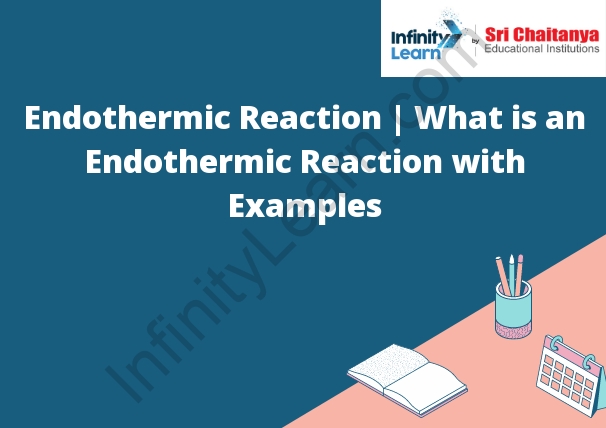Table of Contents
What is an Endothermic Reaction with Examples?
- Endothermic reactions are those that absorb energy in the form of heat. This energy is used to break down the reactants into their component molecules. The reverse process, exothermic reactions, release energy in the form of heat.
- Some common endothermic reactions include the digestion of food, the formation of water from hydrogen and oxygen, and the burning of fuel. In each case, the energy from the reaction is used to break down the reactants into their component molecules.

What is Enthalpy?
Enthalpy is a thermodynamic quantity that is the total energy in a system plus the product of its pressure and volume. It is a state function, which means that its value depends only on the current state of the system and not on how the system reached that state. Enthalpy is measured in joules or kilojoules.
What are Endothermic Processes?
Endothermic Processes are those that consume energy in order to occur. This energy is usually in the form of heat, which is why these processes are often referred to as “heat engines.” The most common example of an endothermic process is the human body, which consumes energy in order to maintain a constant body temperature.
Introduction to the Endothermic Reaction
- An endothermic reaction is a chemical reaction that absorbs heat from its surroundings. This type of reaction is usually marked by a decrease in temperature. In order to understand how an endothermic reaction works, it is important to first understand the basics of thermodynamics.
- Thermodynamics is the branch of physics that deals with the transfer of energy in the form of heat. There are two types of energy: potential energy and kinetic energy. Potential energy is the energy that an object has due to its position or composition. Kinetic energy is the energy that an object has due to its motion.
- In order for a chemical reaction to take place, the reactants must come into contact with each other and form molecules called intermediates. These intermediates then react to form the products of the reaction. The energy that is required for this process to occur is called the activation energy.
- In an endothermic reaction, the activation energy is greater than the amount of energy that is released by the reaction. This means that the reaction must absorb heat from its surroundings in order to take place. The heat that is absorbed is used to break the chemical bonds between the reactants and form the intermediates.
- Once the intermediates are formed, they react to form the products of the reaction. The heat that is released by this process is used to re-form the original chemical bonds. This means that the overall reaction is exothermic, meaning that it releases energy in
Introduction to Chemical Reactions:
A chemical reaction is the process by which atoms or molecules rearrange themselves to form new substances. In a chemical reaction, atoms are either converted into new atoms (a process called synthesis), or they are broken down into their component parts (a process called analysis).
The products of a chemical reaction are always different from the original substances. In a synthesis reaction, the products are always more complex than the original substances. In an analysis reaction, the products are always less complex than the original substances.
The rates at which chemical reactions occur can vary greatly. Some reactions happen very quickly, while others may take days or even years to complete. The rate of a chemical reaction is determined by the nature of the reactants and the conditions under which the reaction takes place.
Definition of Endothermic Reaction
A reaction in which the system absorbs heat from its surroundings and the change in enthalpy is negative.
Examples of Endothermic Reaction include
- The reaction between ammonia and hydrogen chloride to produce ammonium chloride
- The reaction between silver nitrate and potassium iodide to produce silver iodide
- The reaction between calcium carbonate and hydrochloric acid to produce calcium chloride and carbon dioxide
Endothermic and Endergonic Reactions
Endothermic reactions are those that absorb heat from their surroundings, while endergonic reactions are those that release energy into their surroundings.
Endothermic Reaction Explanation
In an endothermic reaction, the reactants absorb heat from the surroundings, while in an exothermic reaction, the reactants release heat to the surroundings. In an endothermic reaction, the temperature of the system will decrease, while in an exothermic reaction, the temperature of the system will increase.
Difference between Endothermic Reaction and Exothermic Reaction
The main difference between endothermic reaction and exothermic reaction is that endothermic reaction absorbs heat from the surroundings, while exothermic reaction releases heat to the surroundings.
Entropy
- The second law of thermodynamics states that entropy always increases in an isolated system.
- Entropy is a measure of the disorder of a system.
Enthalpy of vaporization
- The enthalpy of vaporization (symbol: ΔH vap ) is the amount of energy required to vaporize a unit mass of a substance.
- The enthalpy of vaporization is a measure of the vaporization ability of a substance. It is the amount of energy required to convert a given quantity of a substance from a liquid to a gas at a given pressure.
- The enthalpy of vaporization is usually expressed in units of energy per unit mass (J/kg).









